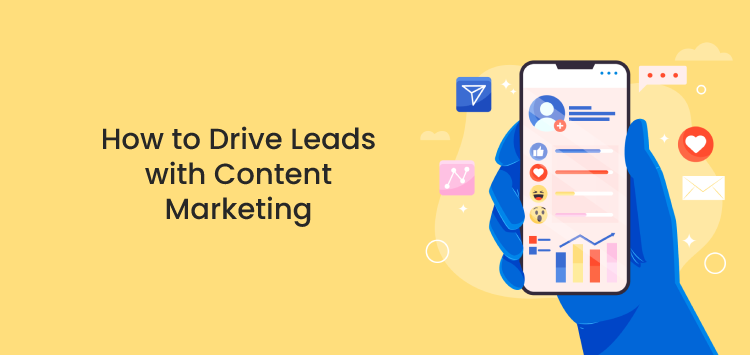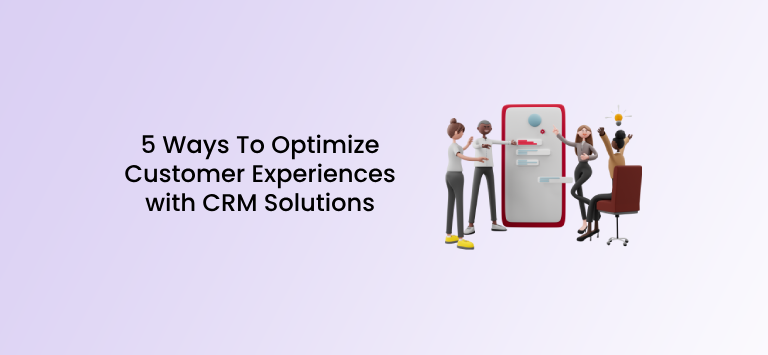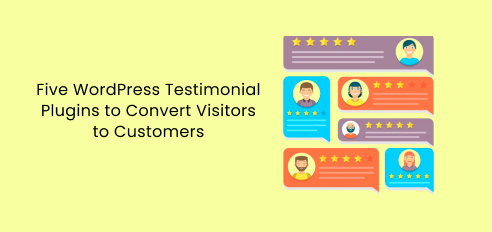Nearly 30% of businesses fail in the first two years of starting. The remaining 50% fall in the next five years.
It can be due to any number of reasons. But sometimes, businesses fail because of a lack of adequate content marketing efforts.
Plenty of business owners fail to see any kind of success with their marketing because they approach it incorrectly. They don’t tend to optimize marketing campaigns to generate leads and ultimately drive sales.
Being able to generate leads drives the growth of a business, and one of the better ways to do the same is with content marketing.
Marketers know that creating valuable content is the best way to get new leads. DemandMetric’s report showed that content marketing could generate thrice as many leads as other forms of marketing.
Since we cleared the base, the following question to answer is how to generate new leads for your business.
Let’s look at the six best ways to generate leads with content marketing.
Start with a Customer Persona
You can generate plenty of leads but convert none to a sale.
The fundamental aspect of creating content that drives leads is this: the content must suit your audience. At its very root, content must suit your ideal audience. If it doesn’t, you don’t generate leads from your content, you don’t get sales, and you’re wasting resources trying to get low-quality leads.
What is a Buyer Persona?
A buyer persona is a profile of an individual customer. This persona maps who your buyer is giving it attitudes, criteria, and touchpoints that a customer may think of before buying a product from you.
When you develop insights into your prospective customer and understand the questions they need answers to you will create value-rich content that answers these questions well.
The first step in converting visitors into leads is with the help of content that delivers value.
Value is dependent on knowing what a customer needs from you.
Here are the details to include in the buyer persona:
- Biographical info –Include name, age, gender, income, location, and profession
- Values or ambitions –The goals, hopes, and ambitions a customer has
- Pain points – The problems they’re struggling with and questions that need to be answered
- Role in the buyer journey – Is the customer the final stakeholder? Do they make the purchase decisions?
- Objections to your product –Do they voice concerns regarding your product?
These and more questions will help you determine the target audience and how to create content that suits their needs while improving conversions. Knowing this information, you can create an effective content strategy for b2b that generates leads.
Facebook Audience Insights
The Facebook Audience Insights tool is inside Facebook ad manager. It has information on your audience and helps you create a persona.
You can add interests you want to research and generate more information on the customer.

Choose the Content-Type that Suits Your Audience
In the next step, you should choose a content type that will appeal to your target audience.
This helps you drive a high ROI by creating content that suits your audience.
There are two big reasons why you need a content marketing campaign.
You can create content to generate traffic or you can create it for leads.
You need quality traffic to your site before you generate new leads
These are some types of content that you need for traffic:
Blog Posts
Blog posts are a great way to drive traffic to your site. They are popular because of the additional value they bring to readers and the increased number of indexed content for your domain. They’re also good for sending people to landing pages. You can create a content calendar with important holidays and festive dates and plan new blog posts based on your calendar
Video Content
Videos are another excellent way to drive traffic. Interesting audience-centric videos are the need of the hour. YouTube is the world’s second-largest search engine, which can help drive a lot of traffic to your sites.
Social Media Posts
There are over 2.95 billion social media users. Take advantage of this by sharing posts on social media to drive traffic to your site. Optimize social media profiles, engage with users and utilize the power of ads.
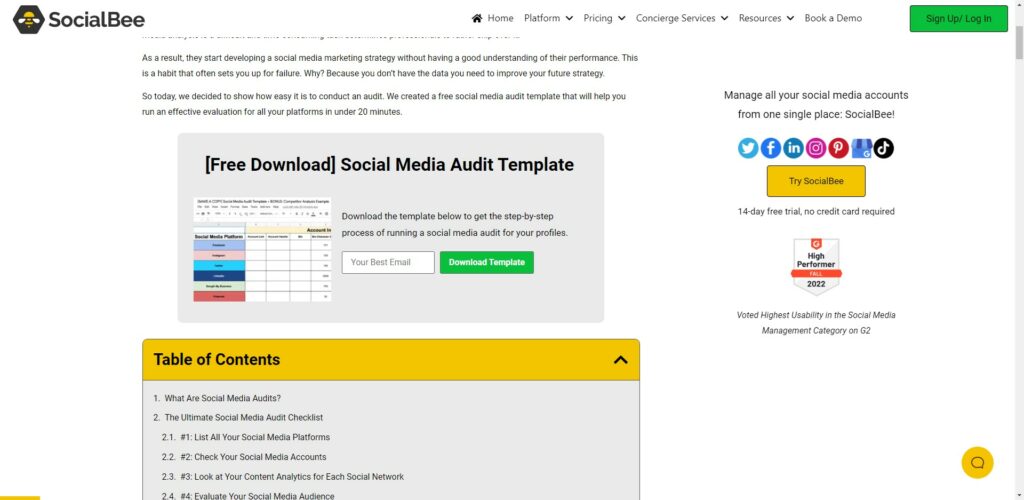
Podcasts
Podcasts are a new way to create content. This scales quickly. A report shows over 700,000 podcasts and 29 million episodes uploaded to them.
growing at a fast rate. A recent 2019 report on podcast statistics reveals how well-poised the market is.
Infographics
Infographics are another gem. They increase traffic and receive higher forms of engagement.
Up your visual marketing game with the help of infographics and videos.
Emails
Email newsletters and similar content are another way to generate traction for your business. However, make sure you always verify your email list.
What is Lead Generation Content?
Again lead generation requires specific lead generation drives. Lead magnets, gated content, eBooks, and whitepapers are all examples of gated content you can use.
Most people are protective of their email addresses. So if you need access to that, you need to give away something valuable in exchange.
Here’s an example of content that generates leads:
- Case studies
- eBooks
- Free reports
- Webinars
- Courses
- Webinars
- Courses
- Free trials
Whenever you create content ensure you add plenty of examples, data tables, charts, and more things. Several plugins make this possible.
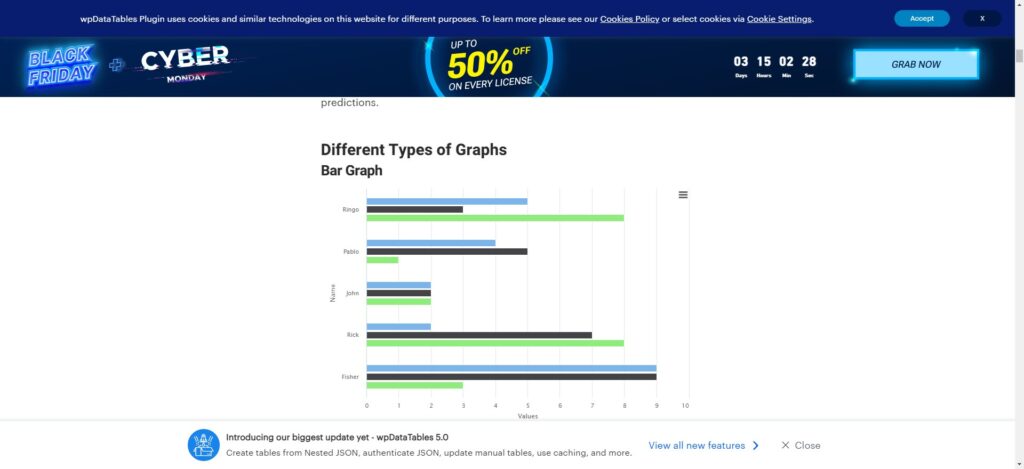
Use Content Syndication
Great content can help generate leads but what if the blog’s new and doesn’t get any traffic? Simple. Start by leveraging the power of content syndication.
Content syndication is the process of publishing your content on bigger third-party sites. This generates traffic and increases engagement. You can generate lots of leads to your site with this.
Use services like Netline to help boost content syndication. The platform syndicates content on B2b networks to build traffic and generate better leads.
To avoid duplicate content issues, use canonical tags that tell search engines that the content published elsewhere is a copy and the origins is elsewhere.
Choose Distribution Networks for Content
You also need a channel to market your content when creating new content, vital as it is.
There is two channels for content distribution—first organic and second paid channel.
Organic distribution channels don’t warrant you spend money. If on a budget, use organic channels to start marketing your content. Organic channels require authority and credibility before they start producing results. They grow with time, and over time you significantly improve your site’s management and the rankings it gets.
Here are some of the most popular distribution channels:
- Search engines like Google, Bing
- Video search engines like YouTube
- Social media search engines like Facebook, Twitter, Instagram, Linked and Quora
You don’t have to use all the channels for distributing your content. If you researched buyer personas, you must be aware of the channels they’re on.
Focus efforts on the channels they spend most time distributing on to maximize your distribution efforts.
Paid distribution channels: On the flipside, paid channels to require that you spend some money to get started. If your PPC campaigns aren’t optimized properly you need to start with some ads and see traffic immediately.
Popular paid options are:
- Social media ads
- Search ads
- Display ads
- Native ads on other platforms
Using both organic and paid distribution can help make lead generation more holistic for your site in the long run. Additionally, you can create content that addresses common painpoints and share it during your live chat conversations or support interactions to drive interactions.
Create Lead Magnets
The lead magnet is essential when generating new leads. If you don’t have a good lead magnet, it’s challenging to create new leads, even with traffic.
Here are some excellent lead-generation ideas:
- Checklists: These lead magnets convert well because they’re easy to read and have good information
- Cheatsheets: Cheatsheets are another favorite as they offer guidelines on generating great results with little stress.
- Templates: These are great lead magnets because users are already on the hunt for them.
- Examples: It doesn’t matter what your industry is. Offering examples for an email address helps both parties.
- Resource lists: These lists save time for you instead of making people do the research themselves
- Tutorials, eBooks, and Guides: Lead magnets like eBooks, guides and tutorials offer easy help about the product and the problems it solves
- Reviews: Both positive and negative reviews can help you figure out pain points and create guides accordingly.
Qualities of Good Lead Magnet
Solve user problems: A lead magnet must solve a specific need of a user. Without it, you can’t turn it into a lead generation system.
- It should be specific: Don’t simply create generalized lead magnets. It should be peculiar to the user so you get a high conversion rate.
- Should be easily accessible: The lead magnet should be delivered quickly. If the user has to wait a long time to get it, they may not convert.
- Easy to digest: Checklists convert well because of this reason. Most prospects don’t want lengthy checklists that they find overwhelming.
- The easier it is to consume, the more people will like it.
If your website has a lot of traffic, but the landing page isn’t optimized for leads, you’re wasting an opportunity. These are the strategies to use to generate leads.
Have a Clear CTA Button
The CTA button is essential. It should be both clear and visible. It should grab their attention. Some of the best CTA button colors are: red, green, orange/yellow.
Conclusion
Content marketing, when done right, can generate plenty of leads for your business. The idea is to research your customer persona well and create content for questions they want answers to.
Author bio: George is a freelancer and blogger who works at Kamayobloggers, a blog he started to share cutting-edge marketing advice.
